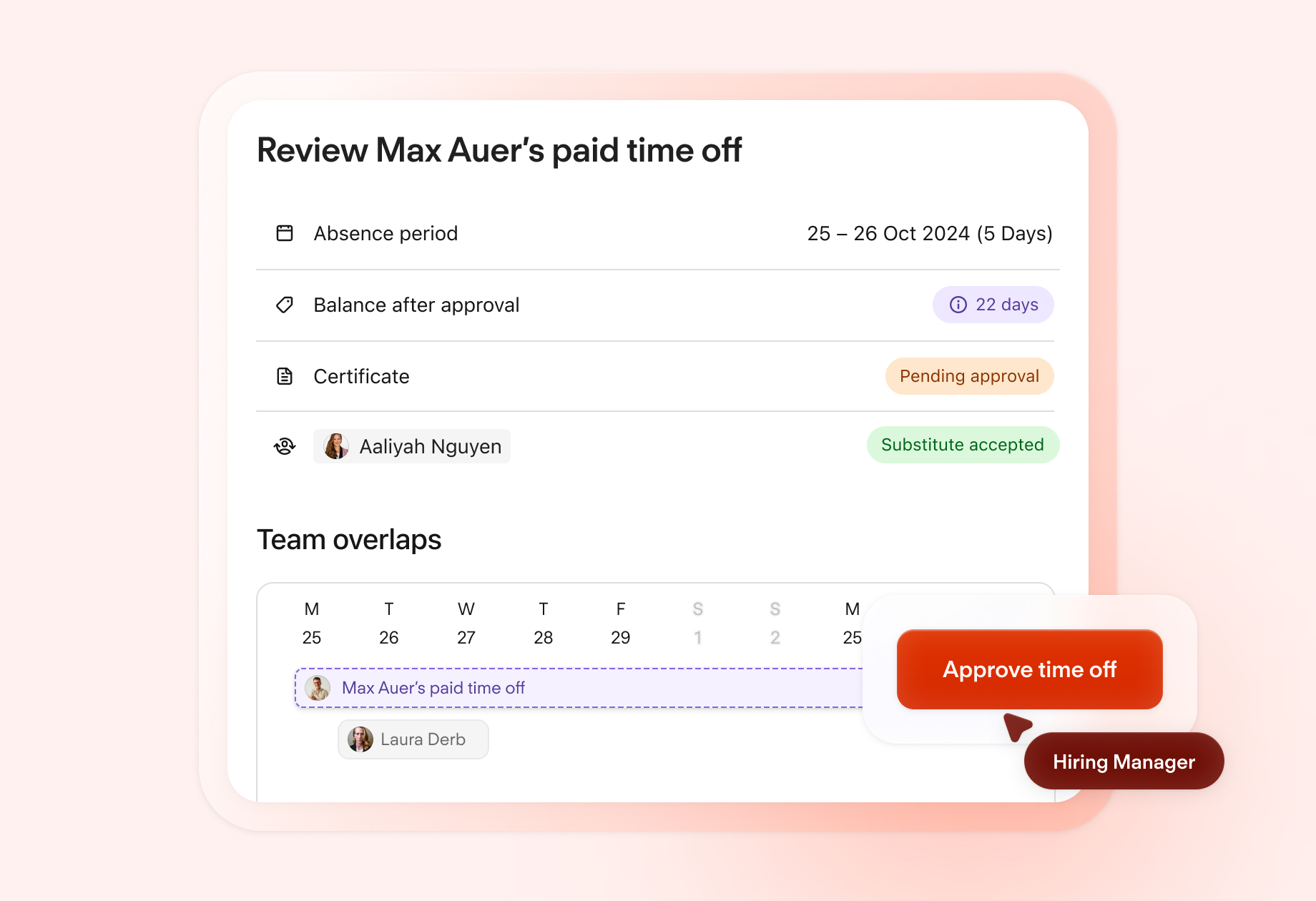Benefits & Risks of an Unlimited Holiday Policy

Is your organisation considering offering unlimited holiday? An unlimited holiday policy can feel like a great option for organisations offering employees greater flexibility and autonomy. But, is it worth it?
In this article, we'll take a look at what makes up an unlimited holiday policy, how to build one and whether it's worth it. By the end, you'll have all you need to know to determine the future of PTO in your organisation.
Skip right to the chase and download our staff holiday planner template today.What is an unlimited holiday policy?
An unlimited holiday policy is a form of paid time off (PTO) that sets holiday entitlement as unlimited. Essentially, employees can take as much or as little holiday as they prefer. It's also known as 'unlimited vacation' or 'flexible holiday.'
The general idea behind offering unlimited holiday is one of flexibility and autonomy. Many organisations use it to attract and retain talent, while employees may view it as an attractive offer (in addition to other benefits).
How do unlimited holiday policies work?
The general idea of an unlimited holiday policy is that employees take time off whenever they need it. No entitlements.
But, this kind of policy still needs rules to function. While employers are seeking to entrust their staff with their time off, there are still some guidelines that many organisations smartly impose.
First, there is the question of approvals. An unlimited holiday policy typically necessitates a greater level of alignment between employee and line manager. Essentially, they'll need to run by their time away with them every time.
Second, is the idea of advanced notice. When employees want to take time away, they should give their manager due notice. Consider the following as a guideline:
One day of leave: An employee should give their manager at least 2–3 days notice.
One week of leave: An employee should seek to ask their manager around 3–5 weeks in advance.
Two weeks of leave: An employee should ask their manager for time away with at least one and a half to two months' notice (bare minimum).
These types of restrictions make sure that abuses to the system don't occur. It also ensures that business operations run smoothly with minimal disruption in the absence of key employees.
Advantages and drawbacks of unlimited holiday
The benefits and drawbacks of introducing an unlimited holiday policy are plentiful. There's a case to be had at either end of the spectrum, so it really depends on what makes sense for your unique workforce.
That said, let's talk about the good (and not so good) things regarding unlimited holidays...
Benefits | Drawbacks |
|---|---|
Higher levels of employee satisfaction and productivity | Lack of structure or guidelines leading to confusion |
Less need to calculate holiday entitlement | Employees not taking enough holiday and burnout increasing |
Help foster a culture of trust and autonomy | Bad actors who abuse the policy |
Reduce turnover rates or regretted attrition | Adding unnecessary complexities instead of simplicity |
No matter which policy you institute, you need to do it with intention. Consider what your employees want, maybe even asking them, before you go ahead and make a change and introduce something new.
Consider whether your workforce wants this change, the benefits you intend to see and how you are going to structure this programme. Many unlimited holiday policies fail due to a lack of organisation.
Review, approve and track absences from one place: Personio

Seamless absence management that scales with your headcount. See how Personio can manage every type of leave for your organisation today.
Absences with PersonioAlternatives to unlimited holiday policies
What might an organisation do instead of offering an unlimited holiday policy? We'd suggest considering the following:
Flexible working hours | Allow your employees to set their own working hours. This can work for both part-time and full-time employees. But, it also requires diligent shift planning and coverage (especially for customer-supporting roles). |
If an employee really needs some time away, you can consider offering it as unpaid leave. That said, unpaid leave can also be disruptive, so it should really be allowed only on a case-by-case basis. | |
Temporary reduction in hours | Organisations can think to offer employees reduced hours over a set period of time for added flexibility. |
For employers who want to reward hard-working staff, they may want to consider time off in lieu. This ensures that employees who work beyond their hours are still compensated with time away from work. | |
A sabbatical policy can be a great benefit for prospective and current employees. Offering extended time away, often based on tenure, can help employees recharge and come back to their work better than ever. |
Each of these options is designed to solve for a tricky conundrum. Mainly, that an unlimited holiday policy can often feel "too flexible". Employees may feel pressure not to take holiday, because when any holiday is possible so is no holiday.
How can HR software help manage unlimited holiday?
The most important part of instituting any kind of holiday policy is having a system to manage it. For that reason, a centralised, holistic and impactful HR software can make a world of difference.
Consider Personio, for instance. From one place, you can manage your holiday policies, track various types of leave (from sick leave to holiday) and have employees request days off with managers (or HR) approving at each stage.
Then, you can generate a report on absence rates across teams, departments or your entire organisation. You can maintain a bird's eye view of how many are out at one time, and what trends are developing.
Speak with an expert today about how Personio can manage your team's absences, no matter the policy you're using.
